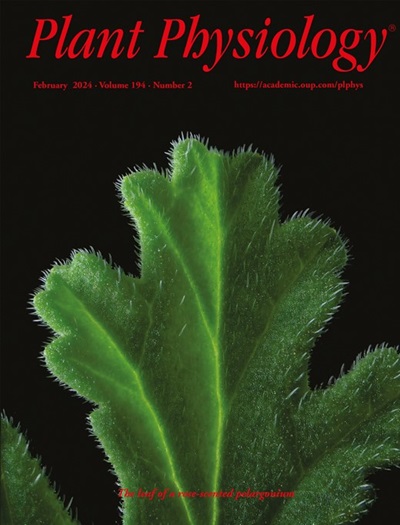Unveiling the evolutionary association of vitamin E, chlorophyll, and PSII through parasitic plants.
IF 6.5
1区 生物学
Q1 PLANT SCIENCES
引用次数: 0
Abstract
The evolution of parasitic plants has been marked by a progressive relaxation of selective pressures associated with maintaining photosynthesis, resulting in a wide diversity in photosynthetic capacity within this group. In this study, we explored this diversity by examining several hemi- and holoparasitic plants, focusing on photoprotection. Our findings revealed a strongly conserved evolutionary association between vitamin E, PSII activity, and chlorophyll content in parasitic plants, with α-tocopherol consistently being identified as the predominant vitamin E form. To validate the antioxidant and photoprotective role of α-tocopherol in a plant with reduced photosynthetic capacity, we investigated the interaction between the stem holoparasitic plant field dodder (Cuscuta campestris Yunck.), which retains partial PSII activity and low chlorophyll levels, and its host, lentil plant (Lens culinaris Medik). This protective role, essential for controlling lipid peroxidation within chloroplasts, was demonstrated both in planta and in isolated chloroplasts from field dodder exposed to photoinhibitory conditions induced by the synthetic photosensitiser Rose Bengal and light. Notably, our findings highlight the final evolutionary step in the conserved role of vitamin E in photosynthesis and photoprotection as revealed through parasitic plants.通过寄生植物揭示维生素E、叶绿素和PSII的进化关联。
寄生植物的进化标志着与维持光合作用相关的选择压力逐渐放松,导致这一群体中光合能力的广泛多样性。在这项研究中,我们通过研究几种半寄生和全寄生植物来探索这种多样性,重点是光保护。我们的研究结果揭示了寄生植物中维生素E、PSII活性和叶绿素含量之间的高度保守的进化关联,α-生育酚一直被认为是主要的维生素E形式。为了验证α-生育酚在光合能力降低的植物中的抗氧化和光保护作用,我们研究了保留部分PSII活性和低叶绿素水平的茎全寄生植物田菟丝子(Cuscuta campestris Yunck.)与其寄主扁豆(Lens culinaris Medik)之间的相互作用。这种保护作用对控制叶绿体中的脂质过氧化至关重要,在植物和暴露于合成光敏剂孟加拉玫瑰和光诱导的光抑制条件下的田间菟丝子的离体叶绿体中都得到了证明。值得注意的是,我们的发现强调了通过寄生植物揭示的维生素E在光合作用和光保护中的保守作用的最后进化步骤。
本文章由计算机程序翻译,如有差异,请以英文原文为准。
求助全文
约1分钟内获得全文
求助全文
来源期刊

Plant Physiology
生物-植物科学
CiteScore
12.20
自引率
5.40%
发文量
535
审稿时长
2.3 months
期刊介绍:
Plant Physiology® is a distinguished and highly respected journal with a rich history dating back to its establishment in 1926. It stands as a leading international publication in the field of plant biology, covering a comprehensive range of topics from the molecular and structural aspects of plant life to systems biology and ecophysiology. Recognized as the most highly cited journal in plant sciences, Plant Physiology® is a testament to its commitment to excellence and the dissemination of groundbreaking research.
As the official publication of the American Society of Plant Biologists, Plant Physiology® upholds rigorous peer-review standards, ensuring that the scientific community receives the highest quality research. The journal releases 12 issues annually, providing a steady stream of new findings and insights to its readership.
 求助内容:
求助内容: 应助结果提醒方式:
应助结果提醒方式:


